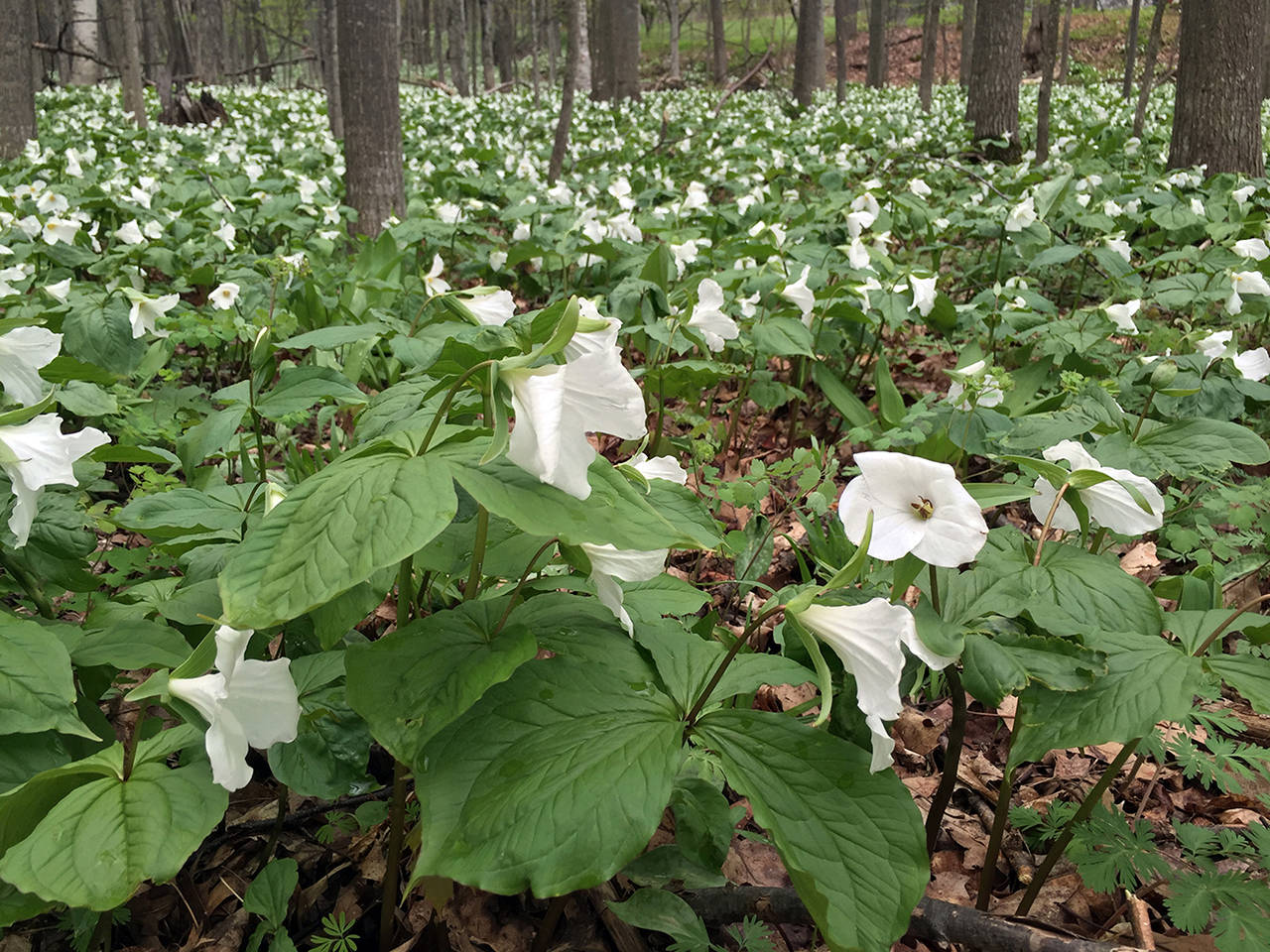By Mary Beth Breckenridge
Akron Beacon Journal
Earthworms are our friends, right?
Not necessarily.
It turns out the slithery creatures that work magic in our gardens are also wreaking havoc on our forests. Earthworms are to blame for changing the forest floor in ways that threaten the survival of some plants, including the beloved trillium.
The problem is that non-native earthworms have moved into woodlands that had evolved to survive without them. The worms speed up decomposition of the spongy forest floor, disrupting the delicate balance among the animals, plants and other organisms that depend on it.
Surprisingly, Ohio has almost no native earthworms, said Dr. Kathryn Flinn, a biologist at Baldwin Wallace University who conducts research related to the worms and their impact. The earthworms that inhabit our state are overwhelmingly European species, many of them brought here in plants imported by settlers or carried in the ballasts of ships.
In fact, our region had no earthworms at all for at least many thousands of years, Flinn said. We don’t know whether earthworms lived here early on, because they have no skeletons and couldn’t have left fossils, she pointed out. But if they did, they were wiped out by the glaciers that covered the upper Midwest.
While a few native earthworms have since managed to migrate to Ohio, they’re far outnumbered by their European cousins. Native earthworms make up only about 1 percent of the earthworms here, Flinn said, and they can’t compete effectively enough to make a comeback.
Ironically, earthworms are a bane to forests for the very same reason they’re a boon to gardens. They eat fallen leaves, twigs and other organic matter from the ground surface and then eliminate in the upper layer of the soil, enriching the soil with their castings.
That’s great in the garden, where crops and ornamental plants need a readily available source of nutrients and use them quickly. It’s not so great in the forest, where plants can’t use up that natural fertilizer as fast.
In normal conditions, leaf litter builds up on the forest floor faster than it can decompose, according to Great Lakes Worm Watch, a public outreach and citizen science project operated by the University of Minnesota. That forms a thick, spongy surface called the duff layer, which holds moisture and keeps organisms in the soil below from freezing in winter.
All sorts of living things depend on that duff layer. Many animals and insects use it for habitat and food. Some plants need its loose texture for their tender roots to spread. Some, including trilliums and other wildflowers, need the spongy surface to protect their seeds from birds and small mammals and to provide the right conditions during the slow germination process.
When earthworms move in, they eat up that duff layer. Plants and other organisms are then forced into the soil, which is less suited to their needs.
“It’s not something that you can see immediately,” said Nidia Arguedas, a conservation planner with Cleveland Metroparks. But in heavily infested areas, she said, soil becomes compacted and plants become noticeably less diverse.
The problems are compounded by the growing population of white-tailed deer, which eat many of the tree saplings and other plants that do manage to survive, she said.
Trouble is, there’s little we humans can do about the worms, both Arguedas and Flinn said. Some have tried adding things to the soil to change the pH to a level the worms can’t tolerate, but that hasn’t proved effective, Flinn said. Other soil organisms were harmed in the process, and the earthworms just ended up returning, she said.
While we can’t eliminate them, we can take steps to control the earthworms’ further spread, they said. The best way is by taking care to dump worms used for fishing bait into the trash instead of into the water or onto the ground.
Arguedas also urges hikers to scrape the mud off their shoes before they leave an area, to remove worm cocoons that might be in the soil.
Eventually, she believes, earthworms will change the face of our forests. Different plants and creatures will move in, some of which might be troublesome invasives like garlic mustard and European slugs, Great Lakes Worm Watch notes.
And some will probably be lost forever — notably the ephemerals that bloom in spring and then quickly disappear underground.
“We’re going to lose trilliums,” Arguedas said. “There’s no hope for trilliums.”


